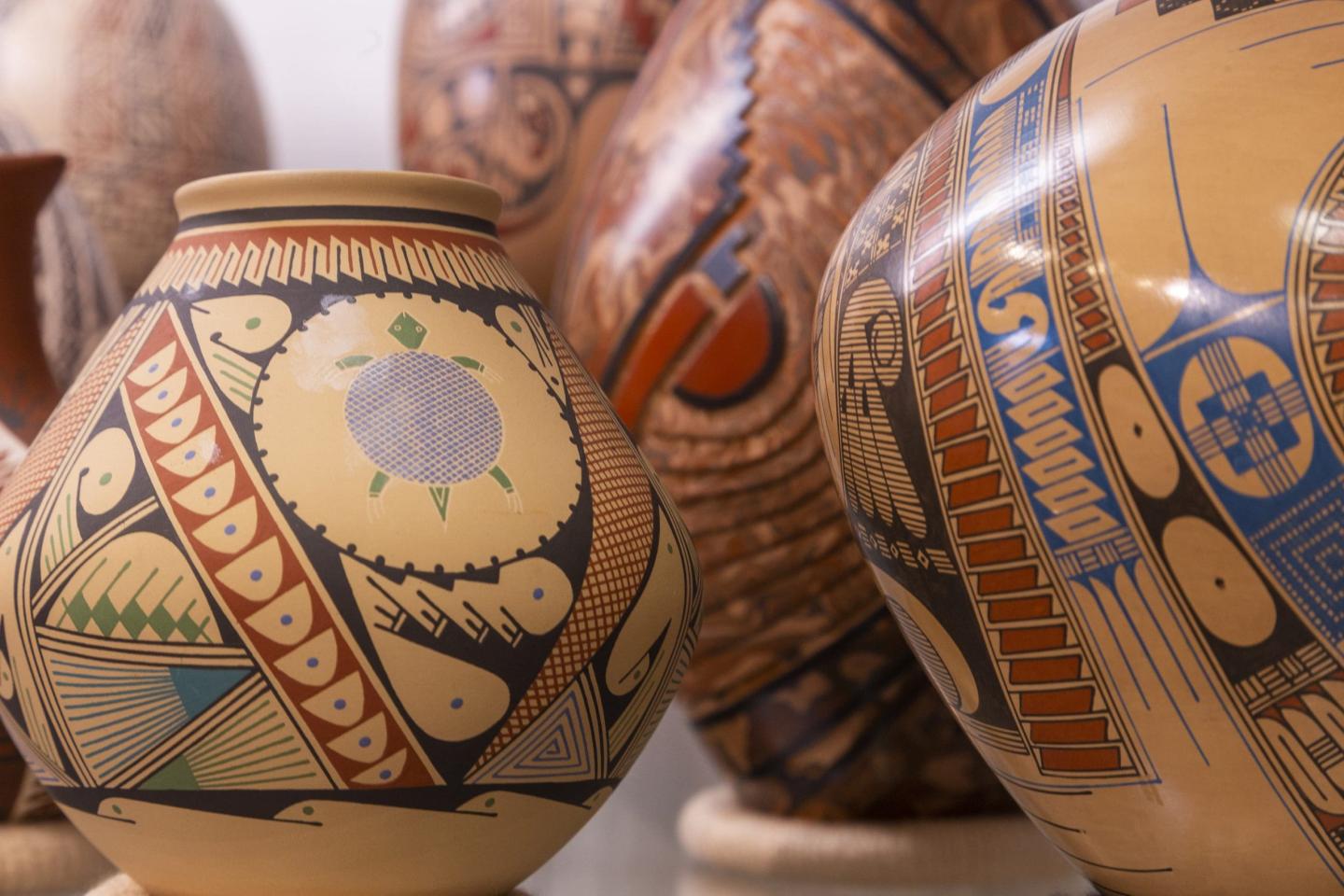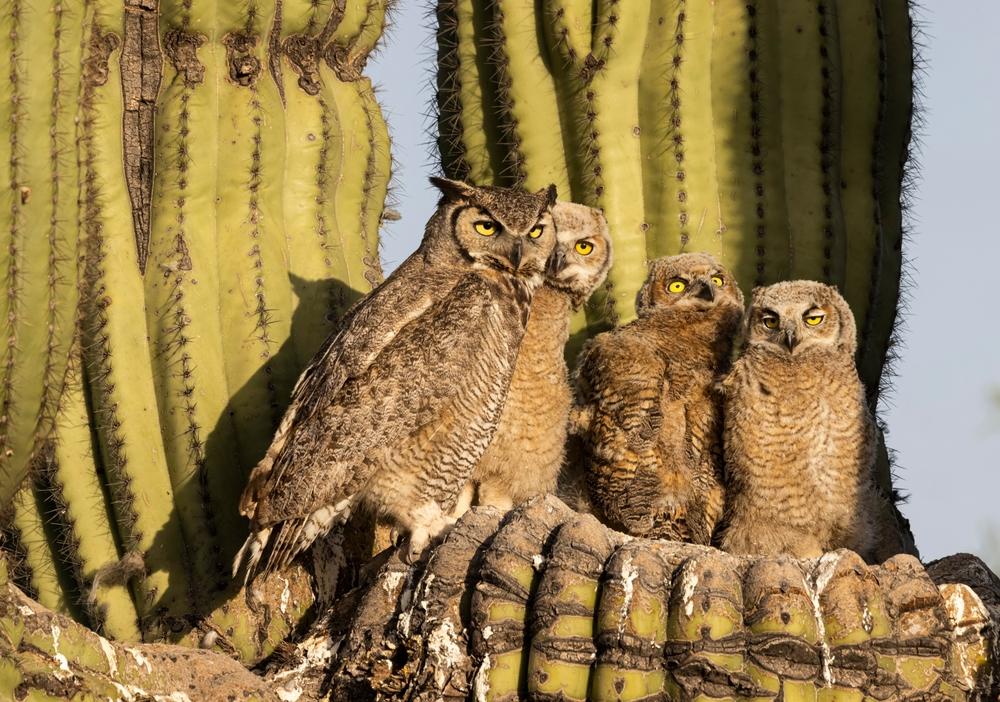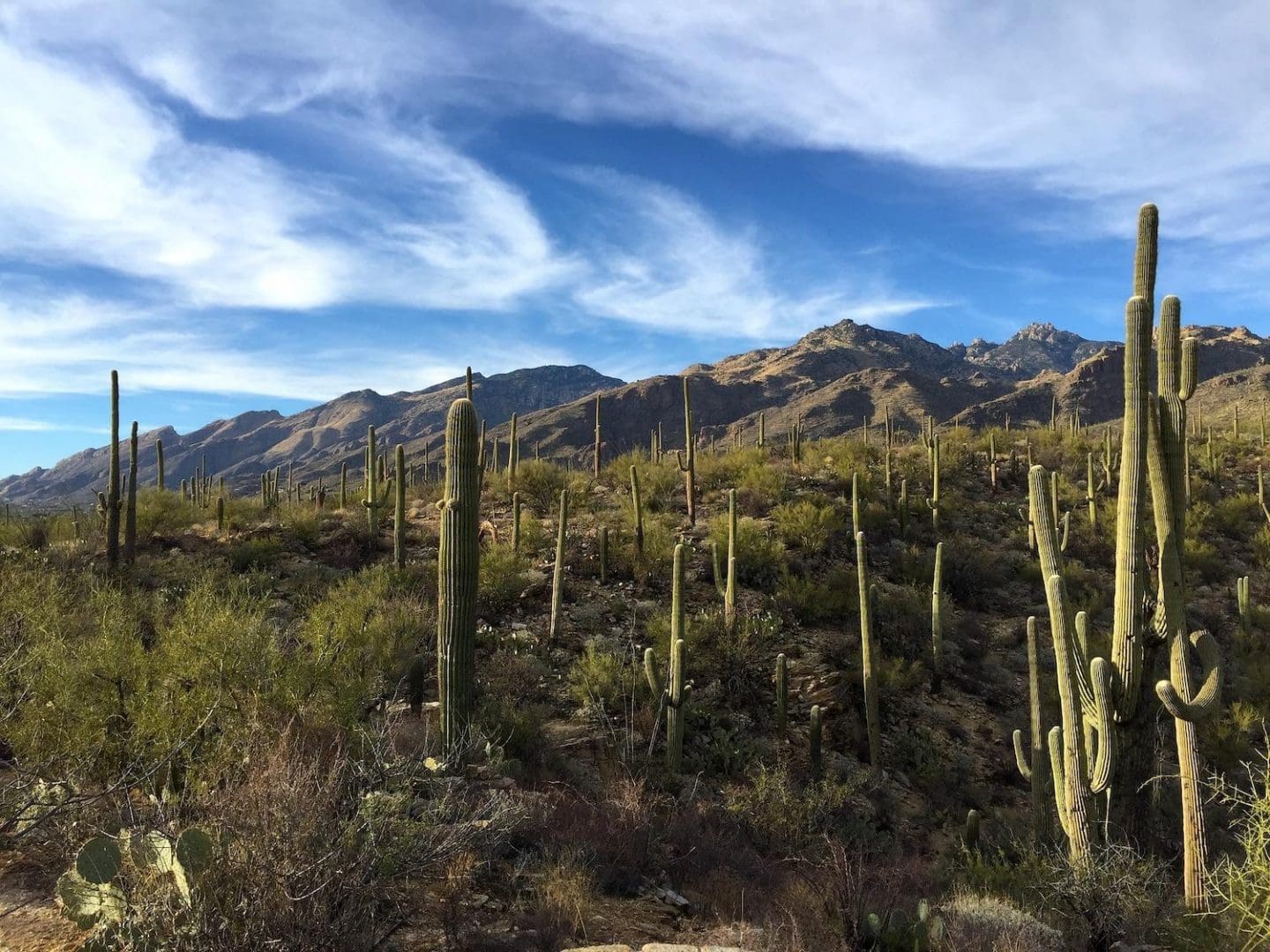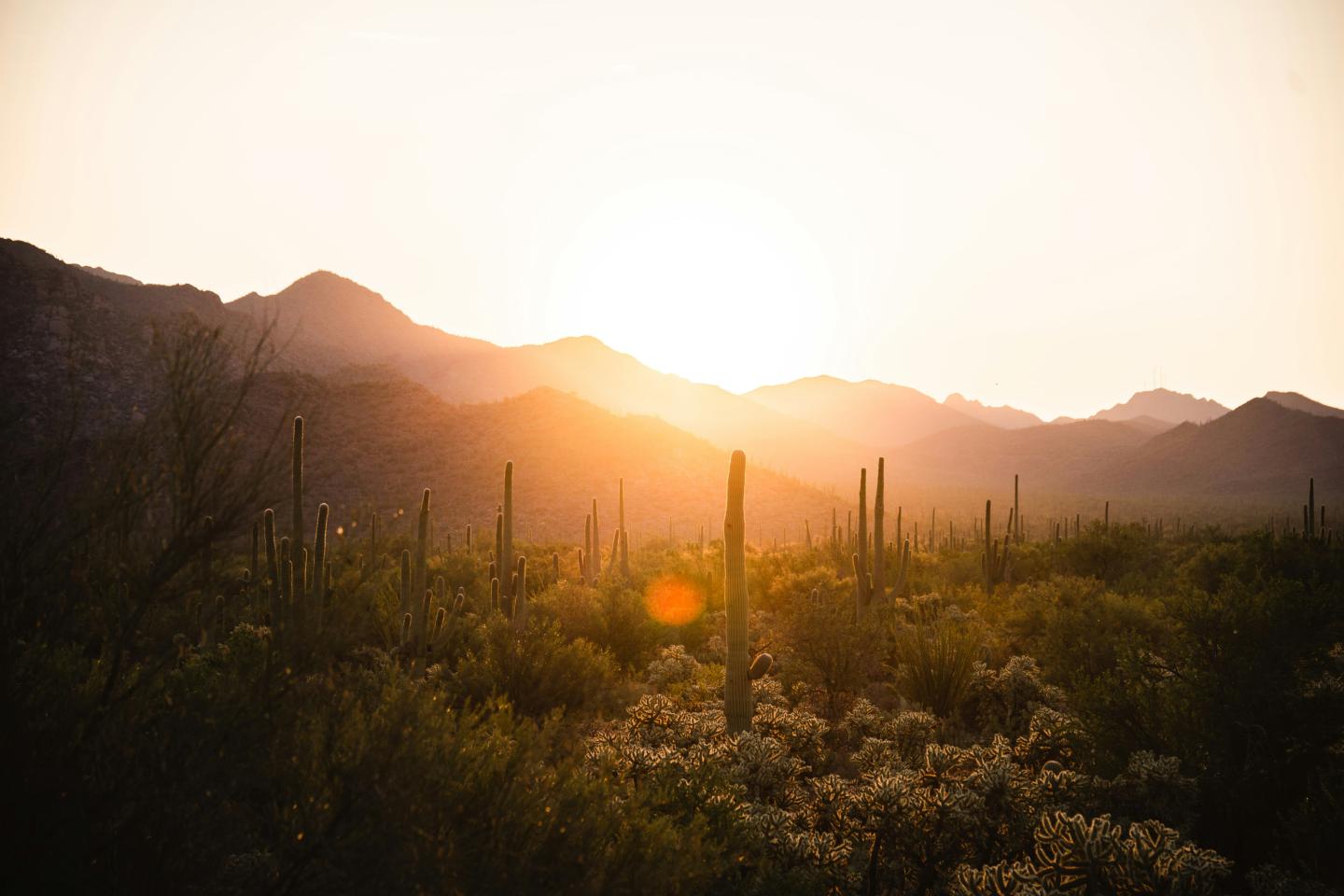
Three Days In Saguaro National Park

Saguaro National Park is small compared to Yellowstone or Death Valley national parks, and less than a quarter the size of nearby Organ Pipe Cactus National Monument. But that doesn’t mean you should take a windshield tour of Saguaro and be gone in 24 hours.
And while it’s true that Tucson’s footprint around Saguaro has grown considerably since it was designated as a national monument back in 1933, that doesn’t mean the city is constantly in view wherever you head in the park.
The fact is, Saguaro seems to get little respect for being a destination. Ask Google how much time you should spend in the park and you might see stories with one-day itineraries or people arguing whether two days is too long. I’ve made two visits to Saguaro in the past decade, and neither was long enough.
Yes, you certainly can drive through Saguaro in a day or less, but you’ll miss the essence of this iconic Southwestern landscape.
“Most of all, it’s the stately saguaros you want to see. They come in all shapes and sizes, some appearing quite humanoid,” Becky Lomax, author of Moon USA National Parks: The Complete Guide to All 62 Parks (which just arrived in October), reminds me. “You can get a better feel for these amazing cacti by exploring both the Tucson and Rincon Mountain sections, spending from dawn to dusk in each. As the lighting changes throughout the day, so does what you discover about the saguaro spines, their shapes, and what grows in their shadows.
“For even amateur photographers using cell phones, the cacti can inspire some of the most iconic national park photos in your collection.”

Despite its arid appearance, this is a rich and diverse landscape. Saguaro aren’t the only desert dwellers in Saguaro. There also are prickly pear, ocotillo (which many in the Southwest use as “living fences”), mesquite and cholla. Wildlife range from Antelope jackrabbits, bobcats and coatimundi to Gila monsters, black bears, and javelina, a pig-like critter that travels in groups.
What follows are some suggestions on what you might consider doing in the park. Mix them with ideas you come up while doing your own research into Saguaro and its treasures.
Keys To Your Visit: Entrance Fees: $25 for private vehicles good for one week; $20 for motorcycles; $15 for pedestrians and cyclists.
Visitor Centers: Rincon Mountain Visitor Center in Rincon Mountain District and Red Hills Visitor Center in Tucson Mountain District
There are no front-country campgrounds at Saguaro.
Day 1
This might be counterintuitive to some, but start your trip with a visit outside the park. Start with a few hours spent at the Arizona-Sonora Desert Museum just south of the park’s Tucson Mountain District to the west of downtown Tucson. This indoor-outdoor museum/zoo really drills down into the ecology of the Sonoran Desert, which is what Saguaro is all about. What better way to prepare yourself for an exploration of the national park than to take a primer on the vegetation and wildlife that make this place home?
Tour the museum, or study its website, and you can learn about desert tortoises, elf owls, Gila monsters, scorpions, and tarantulas that are present in the Sonoran Desert. Within the museum’s animal collection are 20 endangered or threatened species. It also serves as a genetic refuge for “three endangered native fish, one state endangered snake, and several endangered plants.” (Ask about their work with the Tarahumara frog when you visit.)
There’s even an 1,100-square foot aquarium facility at the museum with two galleries. One educates and informs on the freshwater rivers in the Southwest and the species that rely on them, and the other mimics the Sea of Cortez (aka the Gulf of California), which takes in the freshwater that some of those rivers can send to the sea.
After exploring the exhibits inside the museum, head out and walk the trails on the property. They’ll lead you to some pretty interesting displays/exhibits, such as the Hummingbird Aviary and the Walk-in Aviary, where nearly 20 bird species live, including Cardinals, Gambel’s quail, and the Greater roadrunner. Birding can be a challenging hobby out in the open, but here inside the aviary your odds of matching a particular bird species with its look and call go up significantly and better prepare you for what you should look for, and listen for, out in the national park.
The trails also lead you through various ecosystems that you might encounter in Saguaro, such as the cactus forests, higher elevation mountain woodlands, and, of course, desert grasslands.
From the museum, you can explore the Tucson Mountain District of the park for a few hours before heading back to your basecamp. Take the Bajada Scenic Loop and stop at the Signal Hill Picnic Area both for lunch and to study the rock art that dates to the prehistoric Hohokam culture. There are more than 200 petroglyphs to be seen, and many can be viewed by walking the trail that climbs up Signal Hill.
Hikes to consider in this district include the Valley View Overlook, an eight-tenths-of-a-mile out-and-back trek that can be busy with visitors, and the Desert Discovery Trail, a half-mile paved loop good for wheelchairs and which offers exhibits to help you better under the plants, animals, and ecology of the Sonoran Desert.
Those looking for a more arduous hike might consider the King Canyon Trail, a 3.5-mile trek that leads you to the highest point in the Tucson Mountains, 4,687-foot-tall Wasson Peak. You could connect this trail to the Hugh Norris Trail, which at nearly 5 miles in length is the longest in the Tucson Mountain District. Among its payoffs is a nice view out across a cactus forest.
By now, you should be ready to return to your room to clean up for dinner…or you might want to linger to enjoy the sunset.
Day 2
The Rincon Mountain District is the larger of the two districts, and you can spend a day, or days, here. My wife and I visited here one April a few years back, and our timing was perfect. Wildflowers were coloring the park, temperatures were warming, but not too hot or too cold, and crowds seemingly had gone elsewhere.
You can start your day’s exploration right at the Rincon Mountain Visitor Center. After perusing the bookstore there to pick up any guide books, hats, T-shirts or other memorabilia, take a stroll through the Ethnoboany Garden right outside. This is a garden of Sonoran Desert plants that long have been used by local cultures for foods and other uses. As the sign to the trail states, “Imagine living in the Sonoran Desert. What would you eat? What could you use for shelter? What would you do if you became ill?”
The trail only takes 15-20 minutes to complete, and along the way you’ll see a variety of cacti, from saguaro to cholla, as well as mesquite, soaptree, and mormon tea. Placards not only identify these plants for you, but explain what they can be used for.
Another somewhat short hike is along the Freeman Homestead Nature Trail. Safford Freeman appreciated this quiet corner of today’s national park. Back in 1933 he obtained 640 cactus-covered acres under the Homestead Act. There he built a three-room adobe home with several outbuildings, dug a well, and constructed a corral out of octillo branches.
The structures are gone today, but you can appreciate the setting by taking a short walk down the Freeman Homestead Nature Trail. The loop is less than a mile in length, and relatively level, with only a few short mild dips and rises. Stop and pause along the way and you might catch the drumming of a few Gila woodpeckers.
For a longer springtime walk, surround yourself with wildflower color by hiking the Cactus Forest. Hike out the Douglas Spring Trail and on to Bridal Wreath Falls, where hanging gardens are nourished by the falling waters…which can either be a trickle, or a torrent, depending on recent rains.
When you first head down the Douglas Spring Trail, it almost seems as if you’re strolling through a botanical garden. The trail is wide and smooth, lined by all sorts of desert vegetation that explodes like a kaleidoscope during the spring bloom, which usually arrives by early-to-mid April. While saguaro sentinels and spindly ocotillos with their flame-red blossoms give height to the landscape, lower down you’ll find a range of cacti, from prickly pears and fishhook cactus to beavertails, pincushions, and Teddy Bear Chollas, along with sprays of wildflowers.
While you’re hiking in the forest, be sure to keep an eye out for Gila woodpeckers and gilded flickers that whittle out cavities in saguaros for their nests. At the same time, don’t forget to watch where you step, as rattlesnakes and Gila monsters also make this area their home.
There are roughly 165 miles of marked trails in Saguaro, and the Cactus Forest is threaded with roughly one-quarter of that total with a spider-web of trails that ramble through the Sonoran Desert. There’s even a short, 2.5-mile stretch that is open to mountain bikers, though that’s too short to truly appreciate what the area offers if you’re traveling by bike.
Wrap up your day with a slow drive around the Cactus Forest Loop Road. This mostly one-way paved road not only shows off the landscape, but offers some stops with short hikes that interpret the vegetation. When you do get out to stretch your legs, keep a sharp eye. Saguaro don’t grow quickly. A quarter-inch tall version might already be two years old, a desert sprite overlooked amid other vegetation.
The 8-mile loop is popular with area cyclists, so keep an eye out for them and be courteous by slowing down and giving them room. Also, trailers longer than 35 feet or any vehicle wider than 8 feet are not permitted on the loop drive; there just isn’t room for those large vehicles.
Day 3
What should you do on day three? Return to the district you found most interesting. Or take a longer hike in the Rincon District. One item still on my to-do list is a backpack journey to Manning Camp near the park’s roof, at 8,000 feet. Seems odd, going so high in a park defined by the saguaros so far below.
Desert hiking in extreme heat can be hazardous, but savvy visitors know they can hike early, pace themselves, rest often, and drink at least one gallon of water per person per day — while using sunscreen and wearing a hat with a full brim.
Experienced hikers can opt for cooler temperatures in the higher elevations of the Rincon Mountains, trekking a dozen miles up to Manning Camp in the heart of the Saguaro Wilderness (and bounded on three sides by the 38,590-acre Rincon Mountain Wilderness Area within the Coronado National Forest). Manning Camp has a ranger station, a designated campground, and a permanent spring set in a stand of old-growth ponderosa pine.
The camp was built in 1905 by one of Tucson’s early mayors.
You’ll need a backcountry permit to head up to the camp, or elsewhere in the park’s backcountry, for that matter, if you’re staying overnight. Check out this page on the park’s website for details on traveling into the backcountry. With the information there you can easily piece together a multi-day trip into the wilderness.
As you can see, Saguaro needn’t be a windshield park. There’s much to see and do, including watching or taking part in the saguaro census that is completed in the park every ten years (the next one arrives in 2029, so you have plenty of time to plan for it).
Odds are, if you take the time to delve into this surprising park you’ll find reason enough to return.
By Kurt Repanshek, National Parks Traveler
Support from Western National Parks Association made this article possible.



